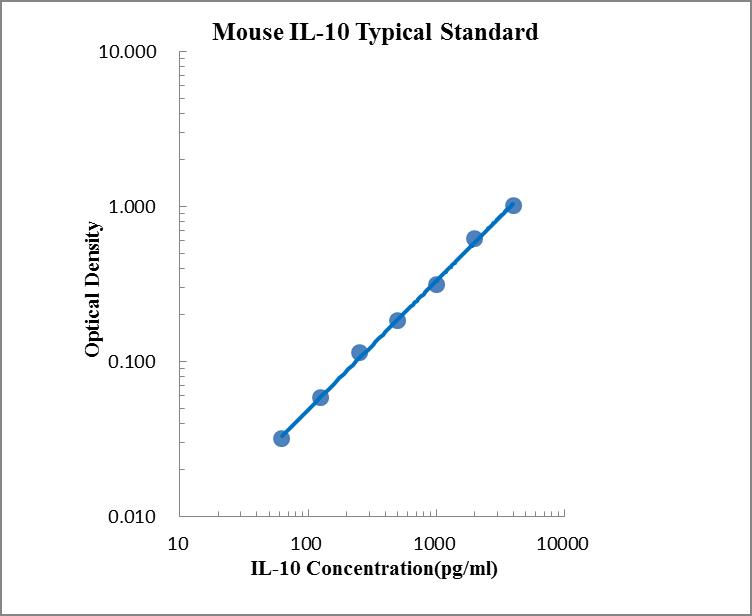Specifications
SHIPPING NOTES
Storing antibodies at various temperatures (up to 40°C) for one week does not affect their activity. As a precautionary measure, we ship all products in insulated packaging with cold packs to provide extra temperature stability in transit. The cold packs may be thawed when you receive the shipment, please be assured that this is normal and your product(s) are safe to use. Once you have received your product(s), please follow the storage instructions on the datasheet(s).
COUNTRY OF ORIGIN
United States of America
APPLICATION
Sandwich ELISA
*USAGE / SAFETY STATEMENT
This product is for research use only. It is not intended for diagnostic or therapeutic use.
CROSS REACTIVITY
This assay has shown no significant cross-reactivity.
DETECTION METHOD
Colorimetric
SPECIFICITY
This kit can assay both natural and recombinant mouse IL-10.
PRODUCT RANGE
62.50 - 4000 pg/ml
BACKGROUND
Interleukin-10 (IL-10), also known as cytokine synthesis inhibitory factor (CSIF), is the charter member of the IL-10 α-helical cytokine family that also includes IL-19, IL-20, IL-22, IL-24, and IL-26/AK155. Mature mouse IL-10 shares 85% amino acid sequence identity with rat IL-10 and 70-77% with bovine, canine, equine, feline, human, ovine, and porcine IL-10. It contains two intrachain disulfide bridges and is expressed as a 36 kDa noncovalently-associated homodimer.
IL-10 is primarily produced by monocytes and, to a lesser extent, lymphocytes, namely type 2 T helper cells (Th2), mastocytes, CD4+CD25+Foxp3+ regulatory T cells, and in a certain subset of activated T cells and B cells. IL-10 is a cytokine with multiple, pleiotropic, effects in immunoregulation and inflammation. It downregulates the expression of Th1 cytokines, MHC class II antigens, and co-stimulatory molecules on macrophages. It also enhances B cell survival, proliferation, and antibody production. IL-10 can block NF-κB activity, and is involved in the regulation of the JAK-STAT signaling pathway.
The immunosuppressive properties of IL-10 suggest a possible clinical use of IL-10 in suppressing rejections of grafts after organ transplantations. IL-10 can furthermore exert strong anti-inflammatory activities.
SAMPLE TYPE
Cell culture supernatant, serum and plasma.
PRINCIPLE ASSAY
Mouse IL-10 ELISA Kit is based on the quantitative sandwich enzyme-linked immunosorbent assay technique to measure concentration of mouse IL-10 in the samples. A monoclonal antibody specific for mouse IL-10 has been immobilized onto microwells. Standard or samples are pipetted into the wells, followed by the addition of biotin-linked monoclonal antibody specific for IL-10, and IL-10 present is bound by the immobilized antibody and detect antibody following the first incubation. After removal of any unbound substances, streptavidin-HRP is added for a second incubation. After washing, substrate solution reacts with HRP and color develops in proportion to the amount of IL-10 bound by the immobilized antibody. The color development is stopped by addition of acid and the optical density value is measured by microplate reader.
ASSAY TYPE
Sandwich (quantitative)
RECOVERY
97% (Average Recovery from Serum Samples).


